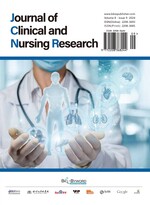Abstract
Objective: To analyze the effectiveness of personalized 3D-printed rehabilitation orthotics in the postoperative recovery of jaw fractures. Methods: Relevant data were collected from 42 patients with jaw fractures treated at our hospital between October 2017 and May 2020. Patients were randomly divided into a traditional group (n = 17) and a modified group (n = 25). The traditional group received standard rehabilitation methods, while the modified group used personalized 3D-printed rehabilitation orthotics combined with improved rehabilitation methods. The temporomandibular disability index (TDI), quality of life scores, postoperative recovery excellence rate, and mouth opening were compared between the two groups at different follow-up times (before rehabilitation, and at 1 week, 3 months, and 6 months post-surgery). Results: At 1 week, 3 months, and 6 months post-surgery, the TDI in both the traditional and modified groups was significantly lower than before rehabilitation, with statistically significant differences (P < 0.05). At 3 and 6 months post-surgery, the TDI in the modified group was lower than in the traditional group, with statistically significant differences (P < 0.05). At 3 and 6 months post-surgery, pain, appearance, activity, recreation, work, chewing, swallowing, speech, shoulder function, and total quality of life scores in both groups were higher than before rehabilitation, with the modified group showing significantly higher scores in pain, appearance, chewing, swallowing, and total quality of life (P < 0.05). Compared to before rehabilitation, mouth opening significantly improved in both groups at 3 and 6 months post-surgery, with the modified group showing significantly greater improvement (P < 0.05). Conclusion: Personalized 3D-printed rehabilitation orthotics are highly effective in the postoperative recovery of jaw fractures. They can improve patients’ quality of life after surgery, enhance the excellent rate of postoperative recovery, and increase mouth opening.
References
Yu L, Tian S, Yang J, et al., 2022, Application of Enhanced Recovery After Surgery Concept in the Nursing of Jaw Fracture Patients. Contemporary Nurses: Specialist Edition (Late Edition), 2022(4): 29.
Yu L, Tian S, 2021, Application of Project Management Concept in Mouth-Opening Training for Jaw Fracture Patients. General Nursing, 19(6): 779–781.
Xia T, 2021, Analysis of the Role of Holistic Nursing Intervention in the Postoperative Recovery of Patients with Mandibular Fractures. Chinese Journal of Disability Medicine, 29(10): 3.
Yu L, Ruan H, Xia D, et al., 2023, Application Effect of Home Rehabilitation Program Guided by Self-Efficacy Theory After Temporomandibular Joint Disc Repositioning Surgery. Journal of Shanghai Jiao Tong University: Medical Edition, 43(5): 532–539.
Cao K, Bao Q, Lv Z, et al., 2022, Comparison of Efficacy and Complications Between Surgical and Conservative Treatment for Mandibular Condylar Fractures. Chinese Science and Technology Journal Database (Citation Edition) Medicine and Health, 2022(9): 4.
Liu T, Niu G, Zhou G, et al., 2022, Development and Clinical Application of a Novel Transverse Process Retractor Assisted by Computer-Aided Design and 3D Printing Technology. China Journal of Orthopaedics, 2022(5): 35.
Hao F, Li F, Wang Y, 2019, Application of 3D-Printed Personalized Mouth-Opening Device in Post-Radiation Therapy Mouth-Opening Exercises for Nasopharyngeal Carcinoma Patients. Journal of Changchun University of Chinese Medicine, 35(3): 4.
Johnston K, Bird L, Bright P, 2015, Temporomandibular Joint Effusion and Its Relationship with Perceived Disability Assessed Using Musculoskeletal Ultrasound and A Patient-Reported Disability Index. Ultrasound, 23(2): 90–96. https://doi.org/10.1177/1742271X14568608
Sakthivel P, K Irugu DV, Singh CA, et al., 2017, Quality of Life Outcome Measures Using University of Washington Questionnaire Version 4 in Early T1/T2 Anterior Tongue Cancers with and Without Radiotherapy: A Cross-Sectional Study. Indian J Cancer, 54(2): 447–452. https://doi.org/10.4103/ijc.IJC_236_17
Tang Y, Wang X, Zhu Y, et al., 2017, A Comparative evaluation of CBCT outcomes of two closed treatment methods in intracapsular condylar fractures. Oral Surg Oral Med Oral Pathol Oral Radiol, 123(5): e141–e147. https://doi.org/10.1016/j.oooo.2016.11.019
Guan T, Li X, Ma Q, et al., 2024, Personalized Design and 3D Formation of Bracketless Orthodontic Appliances. Medical Biomechanics, 2024(1): 39.
Zhang F, 2024, A Degradable Orthodontic Dental Model Resin for SLA 3D Printing and Its Preparation Method: CN202010092503.1.
Lv J, Patiguli A, Urqueksi A, 2022, Mechanical Properties of 3D-Printed PLA/HA Composite Materials. Mechanical Design and Manufacturing, 2022(11): 208–211.
Wang Y, Han S, Zhang L, 2021, Effects of Different Acupuncture Therapies on Temporomandibular Joint Function Index in TMD Patients. Massage and Rehabilitation Medicine, 12(8): 1–3.
Pan L, Hu J, Ye P, 2020, Effect of Stabilizing Occlusal Splint Combined with Manual Therapy on MFIQ Scores, Maximum Mouth Opening, and VAS Scores in TMD Patients. Zhejiang Journal of Integrated Traditional Chinese and Western Medicine, 30(11): 4.
Zhu M, Wei X, Sun W, et al., 2021, Observation on the Efficacy of Manual Reduction Combined with Stabilizing Occlusal Splint in the Treatment of Acute Irreducible Anterior Disc Displacement of the Temporomandibular Joint. Journal of Oral Medicine, 41(11): 5.
